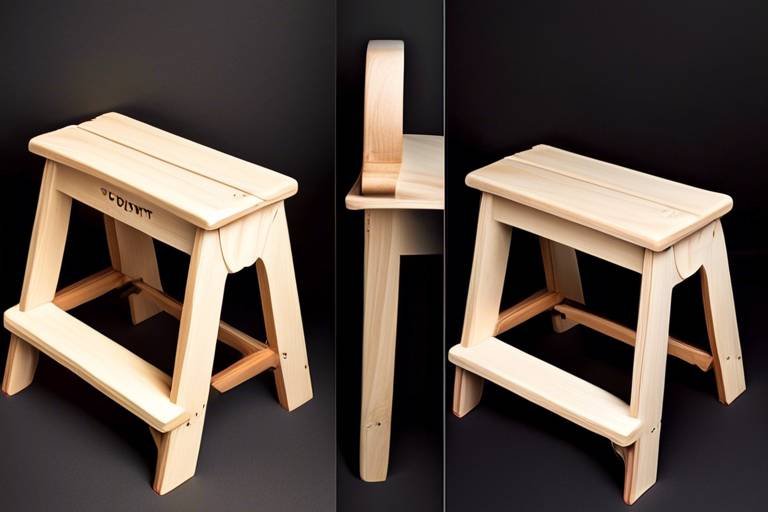Build a Wooden Wine Bar: Do It Yourself
Creating a wooden wine bar is not just about storing your favorite bottles; it's about crafting a stunning centerpiece that reflects your personal style and enhances your living space. Imagine inviting friends over, pouring a glass of Cabernet, and basking in the glow of your handcrafted bar. Sounds dreamy, right? In this comprehensive guide, we’ll walk you through every step of the process, from choosing the right wood to adding those final touches that make your wine bar uniquely yours. So, roll up your sleeves and let's dive into this exciting DIY project!
Selecting the appropriate type of wood is crucial for durability and aesthetics. Not all woods are created equal, and the right choice can elevate your wine bar from ordinary to extraordinary. Popular options include oak, known for its strength and beautiful grain; maple, which offers a smooth finish; and pine, a budget-friendly choice that can be easily stained or painted. When deciding, consider your home decor. For a rustic vibe, reclaimed wood might be ideal, while a sleek modern bar could benefit from the clean lines of birch or walnut. Each wood type brings its own character, so choose one that resonates with your vision.
Before starting your project, gathering all necessary tools and materials is essential to ensure a smooth building process. Here’s a quick rundown of what you’ll need:
- Tools: Circular saw, drill, measuring tape, square, and sandpaper.
- Materials: Wood planks, screws, wood glue, and finish (stain or sealant).
Having everything on hand before you start will save you time and frustration. Imagine trying to build your dream bar only to realize you’re missing the screws! It’s a recipe for disaster, so preparation is key.
Proper measuring and planning are vital for a successful build. Start by determining where your wine bar will go. Measure the space and sketch a layout that includes dimensions. Think about how many bottles you want to store, the size of the bar top, and any additional features like shelves or a wine cooler. Accurate measurements will ensure your wine bar fits perfectly in your designated space and looks professional. Remember, the old adage “measure twice, cut once” holds true here. Taking the time to plan will pay off in the long run.
Design plays a significant role in functionality and style. Consider various design ideas, including size, shape, and additional features like shelving and lighting. Do you envision a compact bar that tucks neatly into a corner, or a grand centerpiece that becomes the focal point of your room? Perhaps you want to incorporate LED lighting to highlight your collection, or a rustic wooden shelf for glasses. The possibilities are endless, so let your imagination run wild!
Establishing a budget helps manage costs effectively. Building a wooden wine bar can vary in price depending on the materials and features you choose. To keep expenses in check, consider the following tips:
- Research prices for wood and materials in your area.
- Look for sales or discounts at local hardware stores.
- Consider second-hand materials or reclaimed wood for a unique touch.
By planning your budget carefully, you can find cost-effective solutions without compromising on quality. Remember, a little creativity can go a long way!
The frame is the backbone of your wine bar. Start by cutting your wood to the required lengths based on your design. Assemble the pieces using wood glue and screws to create a sturdy structure. Make sure everything is level and square, as this will affect the stability of your bar. Once the frame is built, you’ll be well on your way to creating a beautiful piece that can support your collection. Think of the frame as the skeleton of your wine bar; it needs to be strong and well-constructed to hold everything together.
Once the structure is complete, the finishing touches enhance the overall look. Sanding, staining, and sealing are crucial steps that can transform your bar from a simple wooden frame to a polished masterpiece. Choose a stain that complements your home decor, and don’t forget to apply a protective sealant to ensure durability. This is where your wine bar will start to shine, literally and figuratively!
Storage is key for functionality. Consider various storage options, including racks, cabinets, and drawers, to keep your wine and accessories organized. A well-organized bar not only looks great but also makes it easy to find what you need when entertaining guests. Think about incorporating a wine rack for bottles, a drawer for corkscrews, and shelves for glasses. The right storage solutions can make your wine bar both stylish and practical.
Adding personal touches makes your wine bar unique. Explore creative ideas for customization, such as artwork, lighting, and decorative elements that reflect your style and personality. Maybe you want to add a chalkboard for writing down your favorite wines or hang a few wine-themed prints on the wall. Personalizing your space is what truly makes it yours, so don’t hold back!
Q: How much does it cost to build a wooden wine bar?
A: The cost can vary widely depending on the materials you choose and the size of your bar. On average, expect to spend anywhere from $200 to $1,000.
Q: What type of wood is best for a wine bar?
A: Oak, maple, and pine are popular choices, each offering different aesthetics and durability. Choose one that complements your home decor.
Q: Do I need special tools to build a wine bar?
A: Basic woodworking tools like a saw, drill, and measuring tape are sufficient for most DIY wine bar projects.
Q: Can I customize my wine bar?
A: Absolutely! Personal touches like artwork, lighting, and unique storage solutions can make your wine bar truly one-of-a-kind.
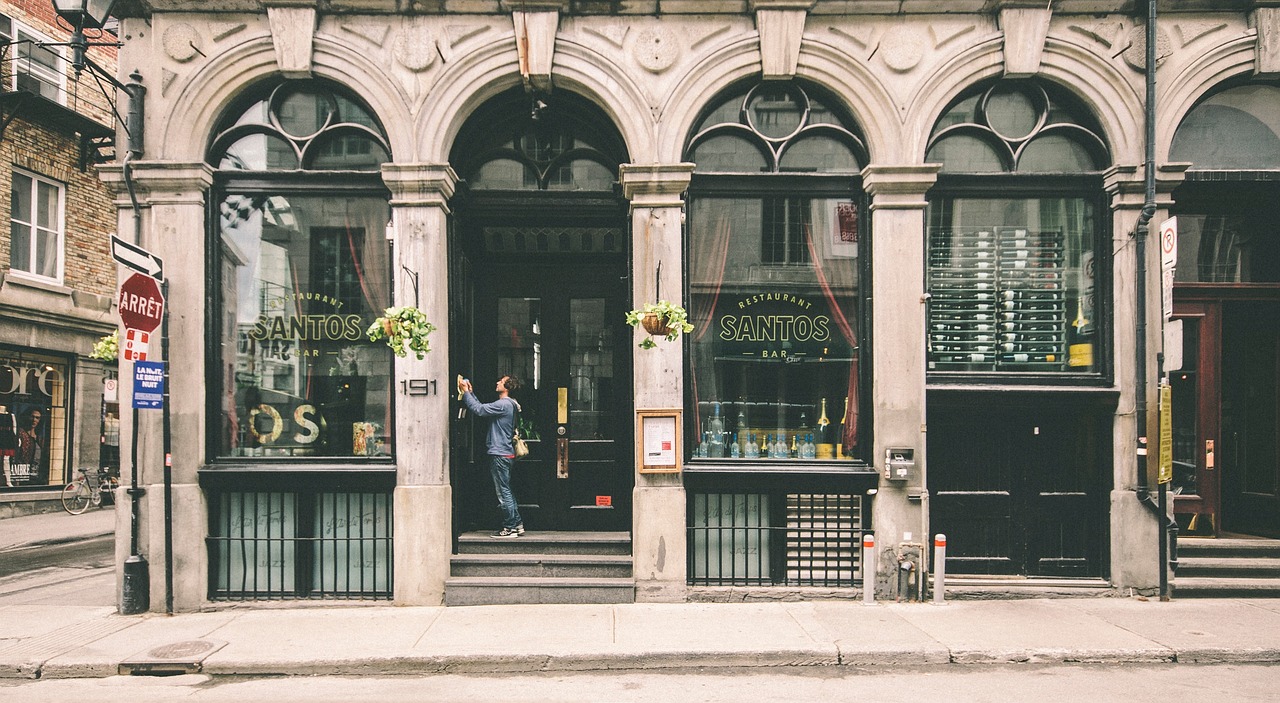
Choosing the Right Wood
When it comes to building your own wooden wine bar, is like picking the perfect wine to pair with your favorite meal. It’s crucial not just for the durability of your creation but also for its aesthetic appeal. You want something that complements your home decor while standing the test of time. So, let’s dive into some popular wood choices that can elevate your wine bar from ordinary to extraordinary!
First up, we have oak. This classic choice is known for its strength and beautiful grain patterns. Oak is great for those who want a rustic or traditional look. It’s also highly resistant to moisture, making it perfect for a wine bar where spills might happen. If you’re looking for something that’s both durable and visually stunning, oak is a fantastic option.
Next, consider maple. Maple wood is often lighter in color and has a fine, consistent grain. It’s a great choice if you want a more modern or contemporary feel. Plus, it’s less expensive than oak, which can help keep your budget in check. Maple is also quite hard, so it can endure the wear and tear of daily use.
Another excellent choice is cherry. This wood is famous for its rich, warm tones that deepen over time, giving your wine bar a sophisticated look. Cherry is softer than oak and maple, so it’s easier to work with if you’re new to woodworking. Keep in mind, however, that it can be more susceptible to scratches, so you may want to consider additional protective finishes.
Lastly, let’s not forget about walnut. This luxurious wood has a rich, dark color and unique grain patterns that can make your wine bar a true statement piece. While walnut is on the pricier side, its beauty and durability make it worth the investment. If you’re aiming for a high-end look, walnut should be at the top of your list.
To help you in your decision-making process, here’s a quick comparison table of these popular wood types:
| Wood Type | Durability | Color | Cost |
|---|---|---|---|
| Oak | High | Light to Medium Brown | Medium |
| Maple | Medium | Light Cream to Light Brown | Low to Medium |
| Cherry | Medium | Rich Red to Brown | Medium to High |
| Walnut | High | Dark Brown | High |
In conclusion, the wood you choose for your wine bar should reflect both your style and the functionality you need. Whether you lean towards the rugged charm of oak or the sleek elegance of walnut, each wood type brings its own unique flair to your project. So, take a moment to consider your options, and you’ll be well on your way to creating a stunning centerpiece for your home that’s perfect for entertaining and enjoying your favorite wines.
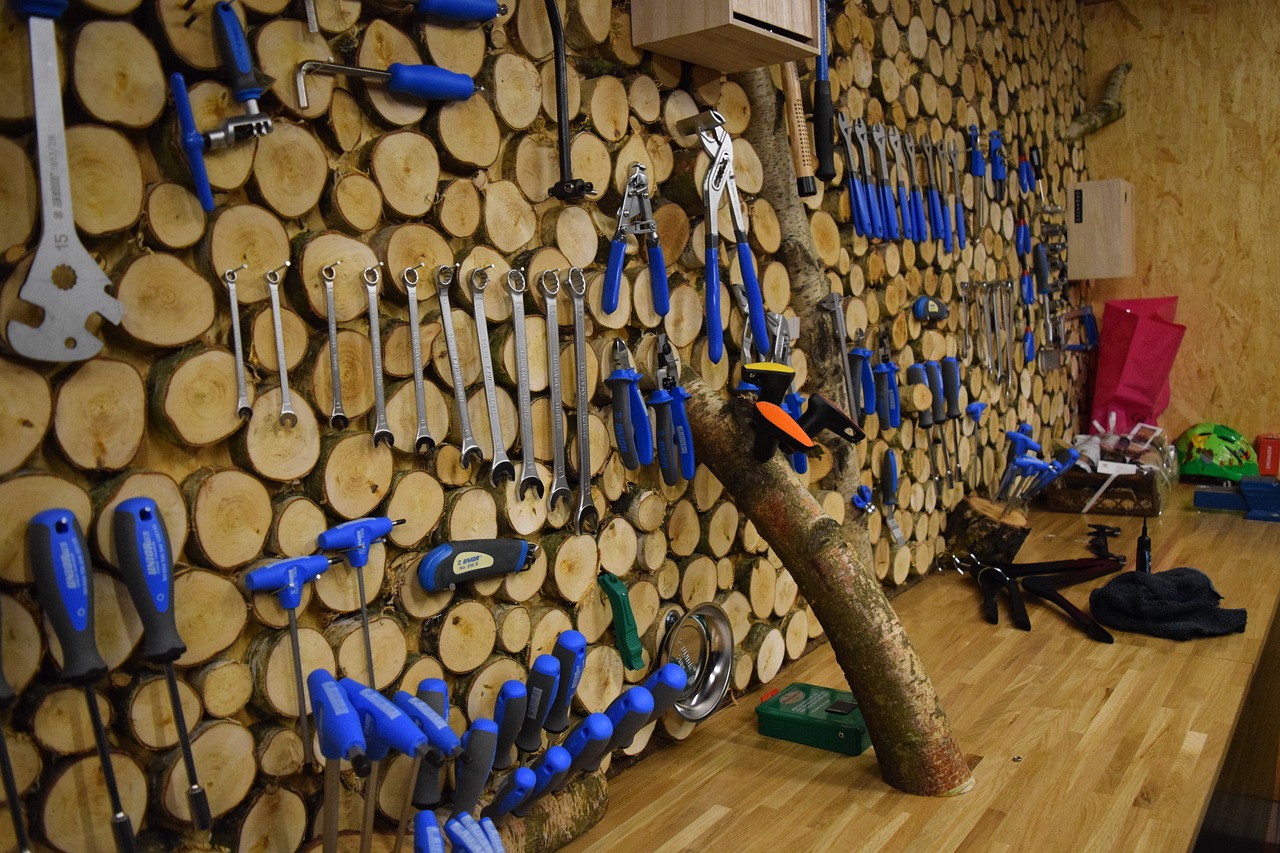
Essential Tools and Materials
Before diving into the exciting world of building your own wooden wine bar, it’s crucial to gather all the you’ll need for this DIY adventure. Think of this phase as gathering your ingredients before cooking a gourmet meal; having everything ready ensures a smooth process and a delicious outcome. You wouldn't want to start chopping vegetables only to find out you're missing the salt, right? So, let’s break down what you’ll need!
First off, let’s talk about the tools. A good set of tools can make or break your project. Here’s a quick rundown of the must-have tools:
- Power Drill: This is your best friend for making holes and driving screws. Opt for a cordless model for flexibility.
- Saw: A circular saw or miter saw will help you cut wood to the right sizes. If you're feeling fancy, a table saw can make precise cuts a breeze.
- Measuring Tape: Precision is key! A measuring tape will ensure that everything fits perfectly.
- Level: You want your wine bar to be straight and stable. A level will help you achieve that.
- Sandpaper: For a smooth finish, sandpaper is essential. Start with a rough grit and finish with a fine one.
Now that we’ve got the tools covered, let’s move on to the materials. Choosing the right materials not only affects the durability of your wine bar but also its overall aesthetic appeal. Here’s what you’ll need:
- Wood: The star of the show! Popular choices include oak, pine, and maple. Each type has its unique characteristics and price point.
- Screws and Nails: These are the connecting pieces that hold everything together. Make sure to choose rust-resistant options for longevity.
- Wood Glue: For added strength, wood glue can be used alongside screws and nails.
- Stain or Paint: To finish off your wine bar, you’ll want to enhance the wood’s natural beauty or match it to your decor.
- Sealant: A good sealant will protect your wine bar from spills and wear over time.
To give you a clearer picture, here’s a handy table summarizing the tools and materials:
| Type | Item | Purpose |
|---|---|---|
| Tool | Power Drill | Driving screws and making holes |
| Tool | Saw | Cuts wood to size |
| Tool | Measuring Tape | Ensures accurate measurements |
| Material | Wood | Main structure of the wine bar |
| Material | Screws and Nails | Connects pieces together |
Once you have all these tools and materials at your disposal, you’ll feel like a craftsman ready to create a masterpiece. Remember, preparation is half the battle won! So, take your time to gather everything before you start building your wine bar. After all, a well-prepared project leads to a stunning end result that you can proudly showcase to family and friends.
Q: What type of wood is best for a wine bar?
A: Popular choices include oak for its durability and beauty, pine for its affordability, and maple for its fine grain. Choose based on your style and budget!
Q: Can I use recycled wood for my wine bar?
A: Absolutely! Recycled wood can add character and uniqueness to your wine bar. Just ensure it’s in good condition and safe to use.
Q: How long will it take to build a wine bar?
A: The time can vary based on your skill level and the complexity of your design, but generally, you can expect to spend a weekend on the project.
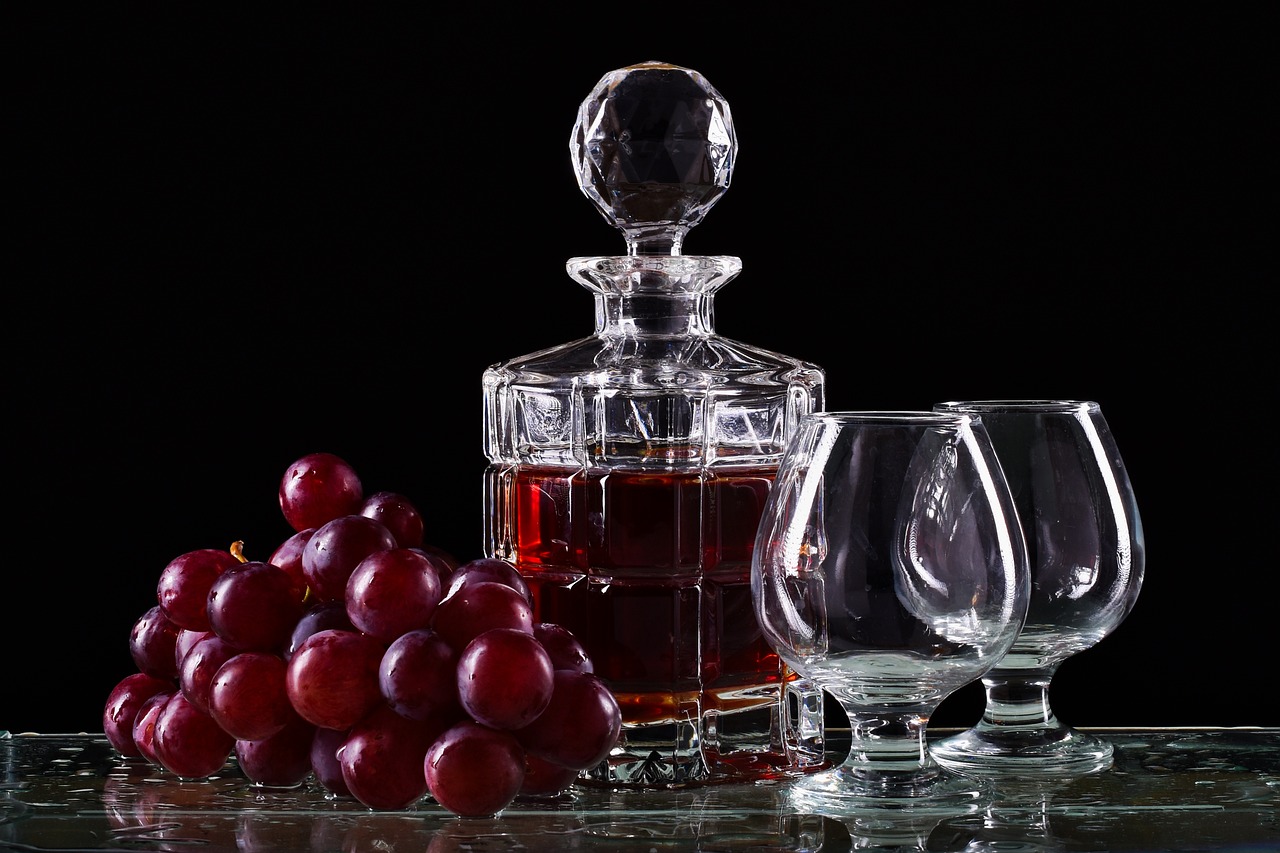
Measuring and Planning
When it comes to building your own wooden wine bar, are absolutely crucial steps that can make or break your entire project. Imagine trying to fit a beautiful new piece of furniture into your home, only to realize it’s too big or too small! To avoid such a disaster, you need to take the time to measure your space accurately and create a detailed plan.
Start by determining the location where you want to place your wine bar. Is it going to be a cozy corner in your living room, or perhaps a stylish addition to your dining area? Once you’ve identified the spot, grab a tape measure and jot down the dimensions of the space. Don’t just measure the width and height; remember to consider the depth as well. You wouldn’t want your wine bar to stick out awkwardly into the room!
Now that you have your measurements, it’s time to think about the design. What size do you envision for your wine bar? A compact design might work best for smaller spaces, while a larger, more elaborate structure could serve as a stunning centerpiece in a bigger room. Here’s a helpful tip: sketch out your ideas on paper or use design software to visualize your project. This will give you a better understanding of how everything will fit together.
As you plan, consider the functionality of your wine bar. What features do you want to include? Here are some aspects to think about:
- Number of wine bottles you want to store
- Glassware storage options
- Additional shelves for accessories
- Space for a wine cooler or other appliances
Once you’ve settled on the design and functionality, create a detailed list of materials you’ll need. This includes the type of wood, screws, and any finishing touches you wish to add. Keeping everything organized will ensure that you don’t miss anything when you start building.
Lastly, it’s important to remember that measuring and planning isn’t just about numbers and dimensions; it’s about creating a space that reflects your style and enhances your home. Take your time during this phase, and don’t hesitate to make adjustments as you go along. After all, a well-planned wine bar can become a cherished part of your home, inviting friends and family to gather and share unforgettable moments.
Q: What tools do I need for measuring?
A: A tape measure, a level, and a square are essential tools for accurate measuring. You might also want a pencil for marking measurements on your materials.
Q: How do I ensure my measurements are accurate?
A: Double-check your measurements and consider measuring twice before cutting any materials. It’s always better to be cautious than to end up with pieces that don’t fit!
Q: Can I adjust my plan if I change my mind about the design?
A: Absolutely! Flexibility is key in DIY projects. Just make sure to update your measurements and materials list accordingly.

Designing Your Wine Bar
When it comes to , think of it as crafting a piece of art that reflects your personal taste while also serving a practical purpose. Imagine walking into a cozy space where your favorite bottles are not just stored but celebrated. The first step in this exciting journey is to envision the size and shape of your wine bar. Will it be a sleek, modern piece that fits snugly against a wall, or a grand centerpiece that commands attention in your living room? The choice is yours, but it should harmonize with your existing decor.
Next, consider the functional aspects of your design. A wine bar is not just about aesthetics; it’s about functionality too. Think about how you’ll be using it. Do you need space for glasses, a corkscrew, or perhaps a mini-fridge for chilling your wines? Incorporating shelving is a fantastic way to display your collection. Open shelves can create an inviting feel, showcasing your favorite bottles like trophies, while closed cabinets can keep your collection dust-free and out of sight when not in use.
Lighting is another essential element that can transform your wine bar from ordinary to extraordinary. Soft, warm lighting can create a welcoming ambiance, inviting friends and family to gather around. You might consider installing under-shelf lighting or pendant lights above the bar to highlight your collection. Imagine how beautiful your wine bottles will look when illuminated, casting a warm glow that enhances the overall atmosphere of your space.
Don’t forget about the materials you choose for your wine bar. Wood is a classic option that adds warmth and character, but you could also explore metal or glass accents for a more contemporary feel. Think about how these materials will interact with your home’s existing elements. For instance, if you have rustic wooden furniture, a reclaimed wood wine bar could tie the room together beautifully.
As you design, sketch out your ideas on paper or use design software to visualize your wine bar. This step is crucial as it allows you to play with different layouts and features. You might even want to create a
| Feature | Material | Pros | Cons |
|---|---|---|---|
| Open Shelves | Wood | Easy access, aesthetic appeal | Dust accumulation |
| Closed Cabinets | Wood/Glass | Dust-free storage, hidden from view | Less visibility |
| Mini-Fridge | Metal | Convenient for chilling | Takes up space |
Ultimately, the design of your wine bar should reflect your personality and lifestyle. Don’t hesitate to add personal touches, whether it's a unique piece of art, a favorite quote about wine, or even a small plant to bring life to the space. Remember, this is your sanctuary for relaxation and enjoyment, so make it a reflection of who you are!
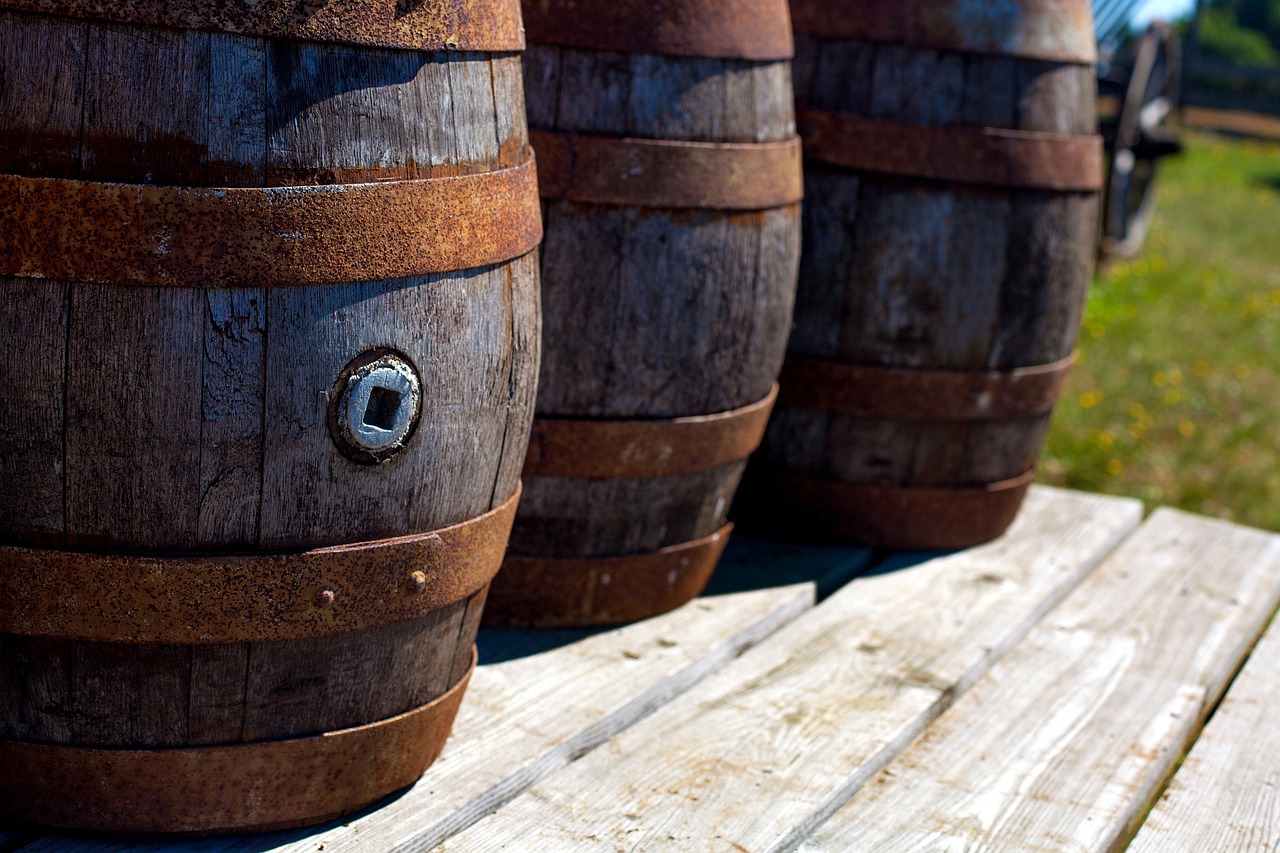
Creating a Budget
Establishing a budget is like setting the foundation for your dream wooden wine bar; it ensures everything is built on solid ground. Before diving into this exciting DIY project, take a moment to think about how much you’re willing to invest. It’s not just about the wood and nails; you’ll need to consider various elements that contribute to the overall cost. First, start by gathering information on the materials you'll need. For instance, the type of wood you select can significantly impact your budget. Hardwoods like oak or cherry might be more expensive, but they offer durability and stunning aesthetics. On the other hand, softer woods like pine can be more budget-friendly but may not hold up as well over time.
Next, it’s essential to account for tools and supplies. If you don’t already own the necessary tools, such as saws, drills, and sanders, you might need to factor in rental or purchase costs. Consider creating a simple table to help you visualize your expenses:
| Item | Estimated Cost |
|---|---|
| Wood (per board foot) | $5 - $15 |
| Tools (if not owned) | $50 - $300 |
| Screws and fasteners | $10 - $30 |
| Finishes (stain, sealant) | $15 - $50 |
| Miscellaneous supplies | $20 - $100 |
Once you have a clear picture of your expected expenses, it’s time to prioritize your spending. Ask yourself: What are the must-haves versus the nice-to-haves? For example, while built-in lighting might be a wonderful addition, it could be something you can add later on. By distinguishing between essentials and extras, you can allocate your funds more effectively.
Additionally, don’t forget to leave a little wiggle room in your budget for unexpected expenses. DIY projects often come with surprises, whether it’s needing extra wood or accidentally misplacing a tool. A good rule of thumb is to add about 10-15% to your total budget to cover these unforeseen costs. This way, you can keep your project moving smoothly without financial stress.
Finally, consider potential ways to save money without sacrificing quality. For instance, check out local lumber yards for discounts or surplus wood, or even consider repurposing wood from old furniture. Not only is this budget-friendly, but it also adds a unique touch to your wine bar. By being strategic and thoughtful about your budget, you’ll find that creating your wooden wine bar is not only achievable but also incredibly rewarding!

Building the Frame
Building the frame of your wooden wine bar is like laying the foundation of a house; it needs to be solid and well-constructed to support everything that follows. Start by gathering your materials, which will typically include 2x4s or 2x6s for the main structure. These pieces will form the skeleton of your wine bar, providing both strength and stability. Remember, the quality of your wood is essential, as it directly impacts the durability of your bar.
Before you get started, it's crucial to have a clear plan in place. Measure the dimensions of your desired wine bar space carefully, taking into account the height, width, and depth. This will help you determine how many pieces of wood you'll need and how to cut them accurately. A good rule of thumb is to sketch a simple diagram of your design, noting where each piece will go. This step will save you time and frustration later on.
Once you have your materials and measurements sorted out, it’s time to cut the wood. Use a miter saw for precise cuts, ensuring that each piece fits snugly together. As you cut, keep safety in mind; always wear protective eyewear and follow the manufacturer's instructions for your tools. After cutting, lay out the pieces on the floor to visualize how they will come together. This is a great moment to make adjustments if necessary.
Now, let's talk about assembly. Start by constructing the base of the frame. Lay two long pieces parallel to each other and connect them with shorter pieces at each end to form a rectangle. Use wood screws to secure the joints, making sure they are tight and flush. A power drill will be your best friend here. Once the base is complete, build the vertical supports, attaching them to the corners of your rectangle. The height of these supports will depend on your design—typically, a wine bar stands about 42 inches tall.
After the vertical supports are in place, connect them with horizontal pieces at the top to create a sturdy frame. This will not only add strength but also give you a place to attach shelves or other features later on. Ensure that everything is level and square; you can use a level tool for this. If you find any inconsistencies, adjust the frame before moving on.
For added stability, consider adding diagonal braces at the back of the frame. These will help prevent wobbling and ensure that your wine bar can withstand the weight of your collection. Once the frame is fully assembled, take a moment to inspect it for any rough edges or splinters. Sanding these down will not only make the frame look better but also ensure safety when handling the bar.
In summary, building the frame of your wooden wine bar requires careful planning, precise measurements, and solid construction techniques. By following these steps, you'll create a strong foundation that will support your wine collection and enhance your home decor. Remember, the frame is just the beginning; the real fun begins when you start adding your personal touches and finishing details!
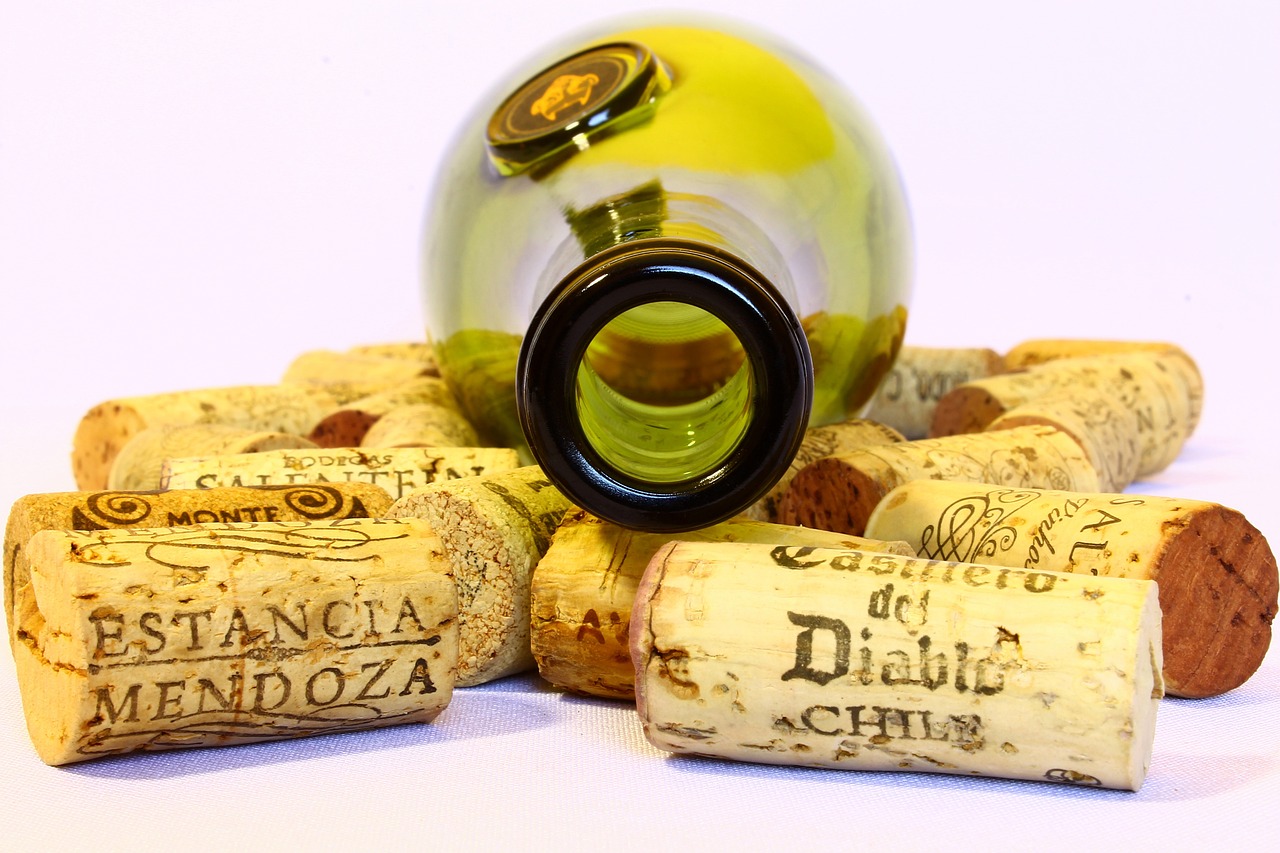
Finishing Touches
Once you've constructed the frame of your wooden wine bar, it's time to add those all-important finishing touches that will elevate your creation from a simple structure to a stunning centerpiece in your home. Think of this stage as the moment when a painter adds the final strokes to a masterpiece. It’s not just about aesthetics; these finishing touches will also enhance the durability and functionality of your wine bar.
The first step in this process is sanding. This might seem tedious, but trust me, your future self will thank you! Sanding helps to smooth out any rough edges or surfaces, creating a polished look that feels great to the touch. Use a variety of sandpaper grits, starting with a coarser grit to remove any major imperfections, and then gradually move to finer grits for that ultra-smooth finish. Don’t rush this part; it’s all about making your wine bar feel luxurious.
Next up is staining. This is where you can really let your personality shine through! Choose a stain that complements your home decor. Whether you prefer a rich mahogany, a light oak, or even a bold color that makes a statement, staining not only adds color but also protects the wood from moisture and wear. Apply the stain with a clean cloth or a brush, and remember to follow the grain of the wood for the best results. Allow it to dry completely before moving on to the next step.
After staining, you’ll want to seal your wine bar. A good sealant will protect your bar from spills and scratches, ensuring it looks great for years to come. Polyurethane is a popular choice for its durability, but there are also water-based options that dry clear and are less odorous. Apply at least two coats, allowing each coat to dry thoroughly. This is your wine bar's armor, so don’t skip this crucial step!
As you finalize the look of your wine bar, consider adding decorative elements. This could be anything from a stylish wine rack to ambient lighting that sets the mood for your wine-tasting evenings. You might also want to incorporate some personal touches, such as artwork or decorative bottles, to make the space feel uniquely yours. The goal is to create an inviting atmosphere that encourages relaxation and enjoyment.
Lastly, don't forget to think about functionality. Ensure that your wine bar is not only beautiful but also practical. Consider adding features like built-in glass holders or a small fridge for chilling your favorite bottles. These little details can make a big difference in how you and your guests experience your new wine bar.
Here are some common questions people have about finishing touches for their wooden wine bar:
- What type of wood stain should I use? It depends on your personal preference and the existing decor. Test a few samples on scrap wood to see what you like best.
- How long does it take for the stain to dry? Most stains require about 24 hours to dry, but it's best to check the manufacturer's instructions.
- Can I use a water-based sealant over an oil-based stain? It's generally not recommended as they can react poorly. Stick to a compatible product for best results.

Adding Storage Solutions
When it comes to building your wooden wine bar, storage solutions are not just an afterthought; they are the heart and soul of your design. Think of your wine bar as a stage where your wine collection is the star of the show. Without proper storage, that star might just get lost in the clutter! So, let’s dive into how you can create a functional and stylish storage system that not only keeps your bottles organized but also enhances the overall aesthetic of your bar.
First off, consider the different types of storage options available to you. You might want to include wine racks, cabinets, or even drawers. Each option serves a unique purpose and can be tailored to fit your specific needs. For example, a wine rack is perfect for displaying your collection prominently, while a cabinet provides a hidden space for accessories and less frequently used bottles. Here’s a quick breakdown:
| Storage Type | Pros | Cons |
|---|---|---|
| Wine Racks | Great for display, easy access | Limited storage for other items |
| Cabinets | Conceals clutter, versatile | Can be bulky, harder to access wine |
| Drawers | Organizes accessories, out of sight | Less visible for bottles |
Now, let’s talk about customization. Don’t shy away from adding unique features to your storage solutions. For instance, you could incorporate a built-in wine cooler to keep your whites chilled or add a small shelf for wine glasses. Think of your storage as a canvas; the more creative you are, the more functional and visually appealing your wine bar will be.
Additionally, consider the layout of your wine bar. It’s essential to arrange your storage solutions in a way that maximizes space while maintaining easy access. For instance, placing frequently used bottles at eye level and storing less popular selections on higher shelves can make a world of difference. Remember, a well-organized wine bar not only looks good but also makes entertaining guests a breeze!
Lastly, don’t forget about the importance of lighting. Proper lighting can elevate your storage solutions from ordinary to extraordinary. Think about installing LED strip lights under shelves or inside cabinets to highlight your collection. A well-lit wine bar not only showcases your bottles but also creates a warm, inviting atmosphere that’s perfect for gatherings.
In conclusion, adding storage solutions to your wooden wine bar is an exciting opportunity to blend functionality with style. By considering various storage types, customizing your design, optimizing layout, and incorporating lighting, you can create a space that not only serves its purpose but also reflects your personal taste. So, roll up your sleeves, and let’s make that wine bar a stunning centerpiece in your home!
Q: What type of wood is best for building a wine bar?
A: Popular choices include oak, pine, and mahogany. Each type has its own unique characteristics, so choose one that complements your home decor.
Q: How do I ensure my wine bottles are stored properly?
A: Store wine bottles horizontally to keep the cork moist and prevent air from entering the bottle.
Q: Can I add a mini-fridge to my wine bar?
A: Absolutely! A mini-fridge is a great addition for chilling white wines and keeping your drinks at the perfect temperature.
Q: How do I maintain the wood finish on my wine bar?
A: Regularly dust your wine bar and apply a wood conditioner or polish every few months to keep the finish looking fresh.

Personalizing Your Wine Bar
When it comes to creating a wooden wine bar, the sky's the limit when it comes to personalization! After all, this isn’t just a place to store your wine; it’s a reflection of your style and personality. Think of your wine bar as a blank canvas, waiting for your unique touch. You can start by incorporating elements that resonate with you—be it rustic charm, modern elegance, or even a playful theme. The goal is to make this space not just functional, but also a delightful spot that draws friends and family in for a good time.
One of the simplest ways to personalize your wine bar is through artwork and decorations. Hang up some of your favorite pieces, or even consider creating a gallery wall with photos from memorable wine-tasting trips. You could also include a chalkboard where you can write down the names of your favorite wines or upcoming wine events. This adds a touch of whimsy and keeps your wine bar feeling fresh and engaging!
Lighting plays a crucial role in setting the mood. Instead of standard overhead lights, think about adding string lights or even small pendant lights that can create a warm, inviting atmosphere. You might even consider installing LED strip lights under the shelves to highlight your wine collection. The right lighting can transform your wine bar from just another piece of furniture into a cozy nook where stories are shared and laughter fills the air.
Don't forget about the functional elements that can also be customized. For instance, you can choose unique wine racks that not only hold your bottles but also serve as a design feature. There are countless styles available, from industrial metal racks to elegant wooden designs. Moreover, consider adding a small countertop area for wine tasting, complete with personalized coasters or a custom wine-tasting flight set. This not only enhances functionality but also shows off your flair for detail.
Lastly, consider adding decorative elements that tell your story. Perhaps you have a collection of wine glasses from different regions, or a few quirky corkscrews that you've picked up along the way. Display these items on shelves or in cabinets, and don't shy away from using them as conversation starters. Remember, the best wine bars are those that feel lived-in and loved, so let your personality shine through every choice you make!
- What is the best wood to use for a wine bar? - Popular choices include oak, cherry, and walnut due to their durability and aesthetic appeal.
- How can I ensure my wine bar fits in my space? - Measure your space accurately and create a detailed plan before starting your build.
- What are some budget-friendly ways to personalize my wine bar? - Look for second-hand decor, DIY projects, and consider making your own shelving or racks.
- How can I maintain my wine bar? - Regularly clean surfaces, check for any moisture damage, and reapply finishes as needed to keep it looking great.
Frequently Asked Questions
- What type of wood should I use for my wine bar?
Choosing the right wood is essential for both durability and aesthetics. Popular options include oak, cherry, and pine. Oak is sturdy and has a beautiful grain, while cherry offers a rich color that deepens over time. Pine is more affordable and lightweight, making it easier to work with. Consider the overall decor of your space to select a wood that complements your home.
- What tools do I need to build a wooden wine bar?
To build your wine bar, you’ll need a variety of tools including a saw, drill, measuring tape, level, and sandpaper. Don’t forget screws, wood glue, and finishing materials like stain or sealant. Having the right tools on hand will make your project smoother and more enjoyable.
- How do I measure and plan for my wine bar?
Accurate measurements are crucial to ensure your wine bar fits perfectly in your chosen space. Start by measuring the area where you want to place the bar. Create a detailed plan that includes dimensions for height, width, and depth. Sketching out your design can help visualize the final product and avoid any surprises during construction.
- What are some design ideas for my wine bar?
Designing your wine bar can be a fun and creative process! Consider different shapes such as a traditional rectangular bar or a corner unit to maximize space. You can also add features like shelves for glasses, built-in lighting, or even a small fridge for chilling wine. Think about how you want to use the space and what will fit best with your style.
- How can I establish a budget for my wine bar project?
Creating a budget is key to managing your costs effectively. Start by listing all materials and tools you’ll need, then research their prices. Don’t forget to account for any unexpected expenses that may arise. Look for cost-effective solutions, such as second-hand materials or DIY alternatives, to keep your project within budget.
- What are the steps to build the frame of my wine bar?
The frame is the backbone of your wine bar. Begin by cutting your wood to the appropriate lengths based on your design. Assemble the pieces using screws and wood glue, ensuring everything is level and square. It’s important to take your time during this step, as a sturdy frame will support your entire structure.
- How do I achieve a professional finish on my wine bar?
Finishing touches can really elevate the look of your wine bar. Start by sanding the surfaces to create a smooth finish. Next, apply a stain to enhance the wood’s natural beauty, followed by a protective sealant to ensure durability. These steps will help your wine bar look polished and professionally made.
- What storage solutions should I consider for my wine bar?
Storage is essential for keeping your wine and accessories organized. Consider adding racks for easy access to your wine bottles, cabinets for glassware, and drawers for tools and corkscrews. The right storage solutions will enhance functionality and keep your bar looking tidy.
- How can I personalize my wine bar?
Personalizing your wine bar is a great way to make it uniquely yours. Think about adding artwork, decorative lighting, or special shelving to display your favorite bottles. Incorporating elements that reflect your personality will make your wine bar a true extension of your home.
















